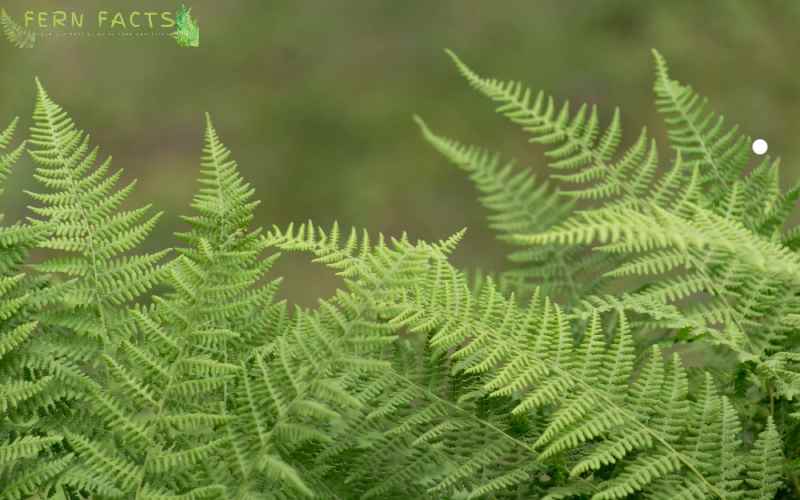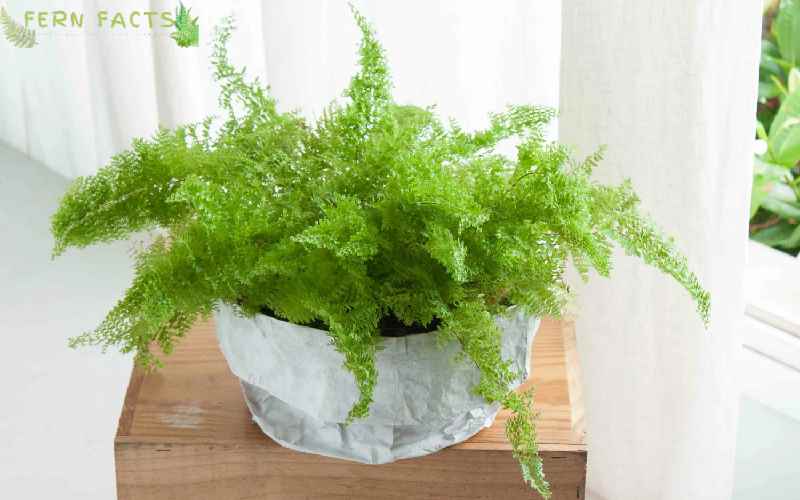Do Ferns Grow All Year?
Being a plant lover, do you want a plant that can grow for all year? Then let me tell you that there is a plant that you can have throughout the year which is Fern.
Fern plants can grow throughout the years with the proper seasonal equipment and factors. You can easily grow these fern plants indoors or outdoors with easy maintenance.
In this article, I will give you a brief idea of how fern grows all year along with a general description of fern plants which can give you a better understanding.
Besides, I will talk about the different patterns and factors that vary their growing levels in all years. So let’s explore these green flowerless plants.

Understanding Ferns
To know about fern plants, you need to understand first what a fern is. Fern is a group of vascular plants that have spores and don’t have any seeds or flowers.
Ultimately, it is a green plant that doesn’t have flowers on it, rather it has feathery or leafy fronds that produce spores.
Just like other flower plants, ferns also have roots, leaves, and stems. Usually, these fern plants have their abundance in tropical areas like tropical rainforest areas where ferns grow best.
According to research, New Zealand has 230 different species of fern plants in it.
The life cycle of fern plants has two different stages; the first one is Sporophyt e and the second one is gametophyte.
Sporophytes actually unleash the spores and gametophytes release the gamete of these fern plants.
Besides, sporophyte plants are diploid, meaning 2n-chromosomes and gametophyte plants are haploid, meaning n-chromosome. At first, the sporophyte produces the spores, later little gametophytes are born or develop from those spores.
Meanwhile, these little gametophytes produce male and female gametes which are called zygotes. Later, the zygote gives birth to another sporophyte and the circle goes like this. This is how their life cycle develops from season to season.
However, the growth of fern plants depends on various factors like temperature, light, water, soil, nutrition and so on. All these factors can be equally variable for healthy growing fern plants.
Fern Growth Patterns
Ferns’ growing patterns also depend on their species variation. As fern is a perennial plant, it has different growth levels than other seasonal plants.
Perennial plants means which plants can grow or live longer than two years. This term is usually used to distinguish the normal other plants that have limited growth or seasonal growth.
So, ferns are perennial plants that have occupied their living for more than several years. These plants will die and they will give birth to new plants which are rooted in their mother plants.
Different to other annual plants which give flowers after their one single growing and dies afterwards. Similarly, biennial plants also give flowers two times in their lifecycle and then they die. But ferns as perennial plants give multiple births and spores during their lifetime.
However, talking about their annual growth, the fern has a different growth rate in different seasons. In the spring seasons, the ferns have a high chance of growing as it has a chance of growing healthy new fronds.
Later, in the summer seasons, fern growth gradually increases. Sometimes the growth might be paced down depending on other variations of plants.
However, in winter, fern plants go on a dormancy period or stage which means they require less energy, less water, and need less nutrients for them.
In this dormancy period, plants will not grow that much or stop their growing process gradually. Thus in this state, ferns don’t need regular nutrients for their body.
Dormant fern is also a good period because you can prune any dead, dried fronds easily without affecting the plants. Equally, if your plant is in the pot, you can easily report it or replace it with newer soil and fertilizer.

Factors Affecting Ferns Growth
Apart from seasonal growth, fern plant growth also depends on other factors like light, temperature, humidity, soil conditions, and moisture levels.
All these factors have made a difference in fern growing procedures over the years.
Light Requirements
Providing an appropriate amount of light is also a variable factor of fern growth over the years. Because all the ferns will not require a similar kind of lighting themselves.
Some fern species will need daylight or full sunlight for their growth, Similarly, some will need shady places or low-light conditions for themselves to grow.
However, some indoor ferns will grow under a shade or sheltered place not exposed to direct sunlight. For those plants, you can keep your plants beside the window or door where the sunlight can come through them.
Do not expose your plants to direct sunlight because it will burn their leaves or their fronds will turn yellow because of too much sun exposure.
Especially in the summertime, direct rays of the sun might be dangerous for ferns to grow productively. However, fern plants need Four to six hours of indirect sunlight to grow properly.
Additionally, they will also require six to eight hours of light to maintain their growth throughout the years.
Sometimes, artificial light or dim light can be a better alternative option that you can use to grow your ferns. However, ordinary light bulbs can create too much heat which can be harmful for your fern plants.
Temperature and Humidity
Another factor is the balanced temperature and humidity for your fern plants to grow successfully all over the year. As these fern plants are not used to direct sunlight, you can keep these as indoor plants with 50 to 70% humidity. Some ferns will also withstand 60 to 70 F temperatures. In those temperatures and humidity, your fern will grow better until and unless that place is too dry for them to live.

Fertilizer
For growing your fern plants throughout the years, fertilizer is another component you should consider.
In the summertime, your fern will need two to four weeks of liquid fertilizer. Try not to mix the fertilizer too strongly with lots of chemicals, because it can damage your plant’s roots.
Rather use a few drops of fertilizer with fresh water and spray it onto your plants. Again, in the winter seasons, ferns become dormant, they do not need too much fertilizer and nutrients at that time.
So do not put too much fertilizer during that time, let your plants rest. If you regularly fertilize them in the winter season, their growth will be hampered in the spring season.
It could also kill your plants in the spring season because of your over-care.
Soil Conditions and Moisture Levels
You need to monitor your plant’s soil and moisture levels before watering your plants on a scheduled basis.
As long as your fern plant’s soil is not fully dry, they do not need water. Some fern plants like deciduous ferns and evergreen ferns soil would completely dry, then you can check their moisture level daily before watering them.
However, for ferns that grow indoors, you need to keep checking their water level and moisture level on the soil whether they have enough water or not.
Mid-spring Checking
Simultaneously, you need to check your plant’s growth level equally whether the plant is healthy or dead.
If you cannot see any coaching or developing growth in your plants in the spring seasons, you need to wait until mid-spring to check your fern’s growing phase.
However, if you still can not find any sign, you have to check whether your plans are alive or not. For that reason, you need to check if their roots are fresh or not.
If it’s fresh or if it’s growing new tiny fronds, that means your fern is healthy. Nonetheless, if you see your plant’s roots become wilted, then your plant is dead anyhow.
Re-potting and Cutting Off the Dead Fronds
You need to cut off your outdoor fern plants, dead fronds, or wilted fronds to keep their growth in balance. You can also choose the same technique for your indoor plants as well.
Make sure, you are cutting their dead, pale weaker, or infected fronds, not the healthier fronds. By doing this you can give them healthy evergreen looks to grow.
If you are growing a fern as an indoor plant, make sure to do repotting young plants. It will give greater soil, moisture, and humidity to your plants to grow.
Conclusion
In short, by understanding your fern’s characteristics and features you can grow your fern plants throughout the year.
However, growing ferns are not equally on the same level, it depends from season to season on their growth.
Apart from that, it also varies from several factors like light conditions, temperature, humidity, soil, moisture, and checking and cutting of your plant’s dead fronds.
All these factors are equally variable to have healthy growing fern plants all over the year.
Thus, by maintaining those things, you can have fern plants that will come back next year to you.







